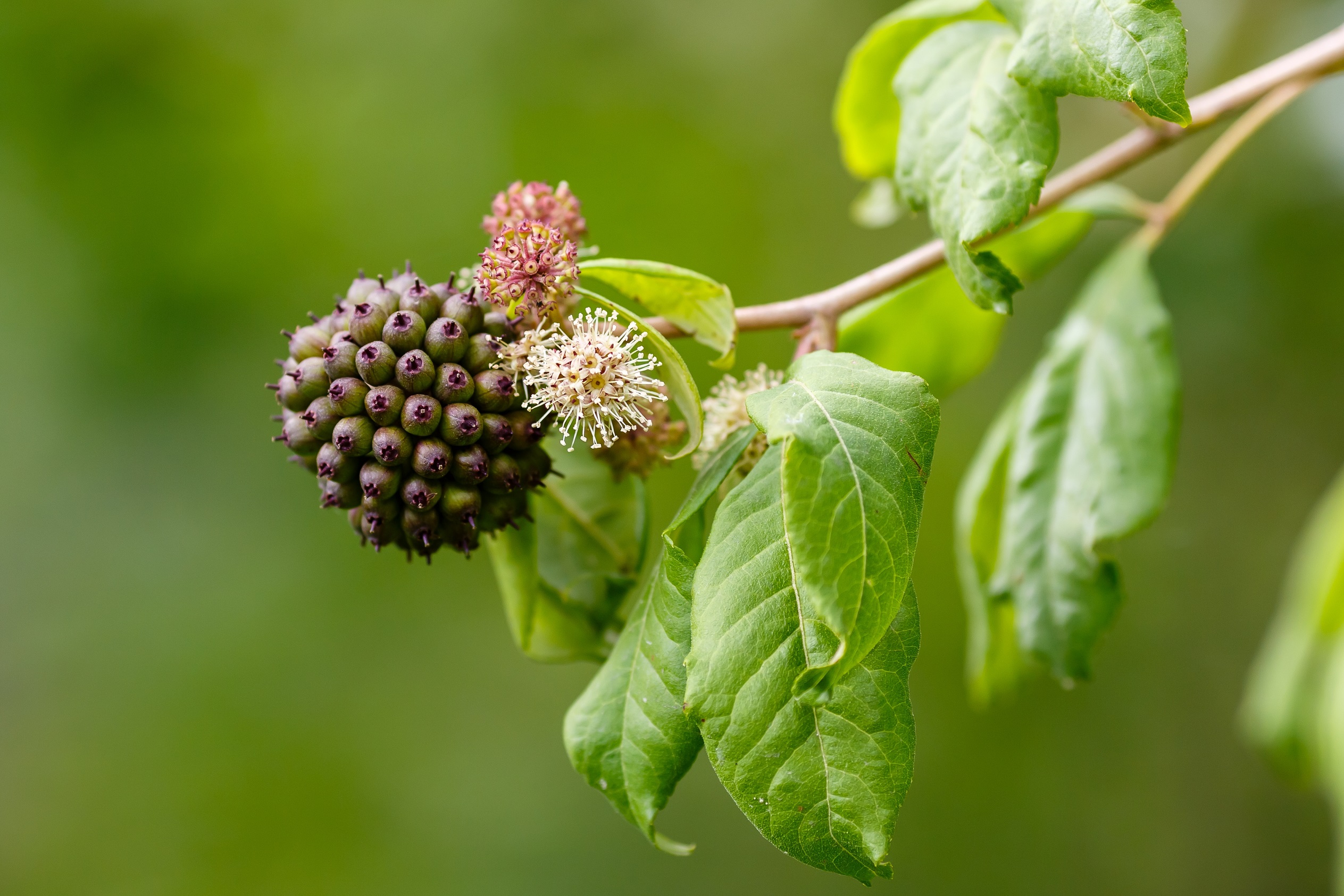
As popularity for this adaptogenic herb increases, how can we ensure we are sourcing it sustainably? Jonas Brab explores the history, challenges and solutions.
In recent times, a group of herbs, commonly referred to as adaptogens, including Eleutherococcus senticosus, known as Siberian ginseng, have become very popular across the world, for their quite specific and unique ability to increase “the resistance of the organism to a broad spectrum of adverse biological, chemical, and physical factors”(1).
The term was first used in 1947, but since then the idea seems to have caught people’s attention, leading to a massive boom on the market with products containing such herbs. However, such fame is not always in favour of the famous, as recently another species with adaptogenic properties, namely rhodiola (Rhodiola rosea) as shown. Over the last few years its populations have declined dramatically, as its popularity surged (2). This article aims to look at the sustainability of the global trade with Siberian ginseng, exploring its history, ecological characteristics, cultivation practices, harvesting methods, and potential conservation strategies.
Historical background
Siberian ginseng has a long history of use in China. Though its history is difficult to isolate since its traditional Chinese name wu jia (five leaves) also applies to several other plants. Some of which, namely Acanthopanax species (Eleutherococcus senticosus is sometimes also referred to as Acanthopanax senticosus), are closely related and used as medicine. But one species, Periploca sepium, which is also referred to as wu jia has significant potential for toxicity, making this confusion quite dangerous for the user. Only later, in 1953 more distinctions were drawn between the different plant species and their different uses (3).
The term ‘adaptogen’ was originally coined by Russian scientists — defined by Nikolai Lazarev in 1947, and later refined by the physician Brekhman in collaboration with his colleague Dardymov in 1968. Brekhman is also credited with popularising the medicinal use of Siberian ginseng. He did extensive research on Asian ginseng (Panax ginseng), but owing to the costliness of Asian ginseng, he soon began searching for similar, cheaper herbs that could be used to the same effect. In 1960, he released his first article on Siberian ginseng, which turned Russian and eventually Western attention to this medicinal herb and its therapeutic potential.
Geological distribution and botany of Siberian ginseng
Siberian ginseng is a small, woody shrub native to the forests of Northeastern Asia, including regions of Russia, China, Korea, and Japan. This deciduous shrub grows to a height of about 2–3 metres and is characterised by its spiny stems and small, yellowish flowers that bloom in late summer. The plant produces black, berry-like fruits that ripen in early autumn, and which remind of the berries of Hedera helix or common ivy, which is a member of the same plant family, Araliaceae. Other panax species such as Panax ginseng or Panax quinquefolius are of the same family, and although only distantly related, are also used as adaptogens. The root of Siberian ginseng, which is the primary part used for medicinal purposes, contains a complex mixture of bioactive compounds, including eleutherosides, polysaccharides, and flavonoids, which all contribute to its therapeutic properties.
Habitat and growing conditions

Siberian ginseng thrives in mixed and coniferous forests, often found in shady and moist environments. The plant prefers well-drained, fertile soils and can tolerate a range of soil types, although it flourishes best in loamy or sandy soils with good organic matter content (4). It is a hardy plant, capable of withstanding harsh climatic conditions, which is why it is prevalent in the cold temperate regions of Asia.
Siberian ginseng has a low seed production and weak disperse power, making it naturally not a plant to populate areas fast. Additionally, the germination rate is quite low, and plants take about three years to mature (5). All these factors make it a difficult plant to cultivate. Plants that take such a long time to mature, make it difficult for growers to adjust to the markets demands which can change year on year. Growing a large crop, which takes three years until it can lead to a financial gain, brings many risks and requires initial financial input from elsewhere, while the plants mature. Additionally, demands may change over time and thus, the amount to grow may no longer be needed in three years, adding financial risks and difficulty planning ahead. Perhaps this is why Siberian ginseng is mostly if not exclusively harvested from the wild. Harvesting from the wild means less financial input at the beginning, as well as no input to support the growing for three years. People can use the time to work elsewhere and support themselves, until it is time to harvest the roots from the wild.
Questions concerning sustainability
Where does your Siberian ginseng come from? In the UK, probably all main herbal medicine suppliers will stock Siberian ginseng products, including tinctures, powders or cut roots. Supplements can also be found in whole food shops or online. But where have these roots been harvested from? How was the land looked after? Was the land polluted with agricultural pesticides or herbicides? How were the roots processed, stored and transported? How well were the workers paid who harvested the roots? And how many tonnes of roots are extracted on a yearly basis to supply the world? How are the natural plant populations coping?

These kinds of questions are what this article is trying to answer. However, it seems that these questions have not yet been answered, and the complexity of the herbal medicine trade makes it sheer impossible to trace back where the roots have come from and what impact the harvest is having.
Although being such a popular herb with abundant global trade, it seems impossible to get any export figures or any status reports on wild plant populations. The plant is neither listed on the Red List of threatened species, nor on the CITES lists. Similarly, it seems impossible to find out anything about the people involved in the supply chain and whether they were treated fairly or not. Perhaps these kinds of studies and reports exist, but not in English or another language accessible to the author.
This is perhaps a good example of one of the foundational issues in the herbal medicine world — traceability. How can herbalists decide how to act, choose the least harmful source of herbs, without depleting natural habitats or supporting supply chains with unethical standards, when there is no readily available information on the sustainability of Siberian ginseng trade?
There is a sustainable means of sourcing Siberian ginseng. If the plants were cultivated, then the harvest will not have a negative impact on wild populations. Additionally, if the plants were organically grown, it can be guaranteed that no pesticides were used in the process, nor was the land contaminated with them by surrounding crops, which will be more sustainable than non-organic practices, where these may, or may not be applied. If wild-harvested, then sustainable harvest practices could be used, such as always leaving life plants behind, rotating harvest areas to let previously harvested areas recover, and monitoring population growth to determine harvest rates for the future. Harvesting should also be done in such a way as to minimise the impact on the environment, which usually means, harvesting by hand. Indeed, when done with care and respect for the plants in question, wild harvesting may even benefit the plant species itself. This was shown in a study on sweetgrass, where the plant populations thrived when they were being harvested using traditional management practices, compared to populations that had been left alone, which were declining (6). So, wild harvesting doesn’t automatically mean unsustainable. Additionally, habitat protection or joint species protection may help to protect Siberian ginseng as well as other species associated with it. It commonly grows beneath Pinus koraiensis trees, which are also commercially used. The trees benefit from the understory growth and Siberian ginseng benefits from having the trees above. A joint protection may make more financial sense, as well as considering the interconnectedness of natural ecosystems (7).
With the ever-increasing demand on a global scale, it is likely that at least in certain areas, unsustainable rates of harvest will soon be reached, if not already. Thus, as should be the case as with any wild harvested herbs, they should be used with care and respect. Monitoring of population developments needs to start, to gain the much-needed data on the population status of this important medicinal herb.
Resources
- Reflection paper on the adaptogenic concept. Evaluation of Medicines for Human Use. European Medicines Agency; 2008. https://www.ema.europa.eu/en/documents/scientific-guideline/reflection-paper-adaptogenic-concept_en.pdf
- Brinckmann J.A., Cunningham A.B., Harter D., 2021, Running out of time to smell the roseroots: Reviewing threats and trade in wild Rhodiola rosea L,Journal of Ethnopharmacology,Volume 269, 2021, 113710, ISSN 0378-8741,, https://doi.org/10.1016/j.jep.2020.113710.
- Winston D., Maime S., 2007 Adaptogens Herbs for Strenght, Stamina, and Stress Relief.
- Maxim R. Eleutherococcus senticosus Siberian Ginseng PFAF Plant Database. pfaf.org. Accessed August 13, 2024. https://pfaf.org/User/Plant.aspx?LatinName=Eleutherococcus+senticosus
- Zhang S, Zhang H, Ding L, Xia Y, Dai W, Han X, Siqin T, You X. 2023 Evaluation and Selection of Excellent Provenances of Eleutherococcus senticosus. Forests. 2023; 14(7):1359. https://doi.org/10.3390/f14071359
- Reid, Laurie A. (2005), The Effects of Traditional Harvesting Practices on Restored Sweetgrass Populations.
- Wan, Jizhong; Wang, Chunjing; Yu, Jinghua; Nie, Siming; Han, Shijie; Liu, Juzhao; Zu, Yuangang; Wang, Qinggui, 2016, Developing conservation strategies for Pinus koraiensis and Eleutherococcus senticosus by using model-based geographic distributions. Journal of Forestry Research, 27(2), 389–400. doi:10.1007/s11676-015-0170-5





























